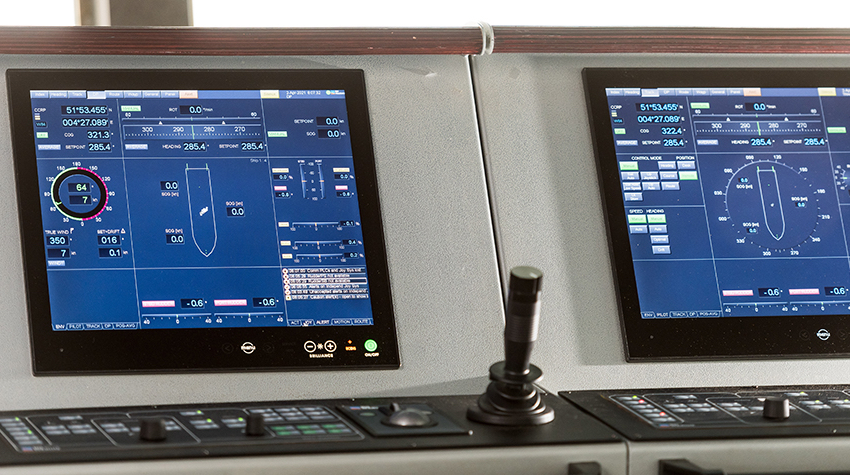RH Marine has developed a new green dynamic Positioning (DP) system, which optimises the fuel consumption of generators and thrusters. As a result, ships can sail more efficiently and save fuel. By switching completely to batteries, the DP system also enables vessels to sail more quietly in DP mode.
The green DP system has been developed for naval vessels, dredgers, research vessels, work vessels and yachts, among others. In fact, more and more new-build vessels need to be able to DP silently for a pre-defined number of hours on battery power.
On the one hand, this is desirable from a comfort perspective for the people on board. An even more important reason is the strict regulations in some Emission Control Areas (ECAs) to minimise the emission of vessels.
Smart system architecture
The new DP system is connected to the Power Management System (PMS) and Energy Management System (EMS) and all those systems communicate with each other in a smart way. If the DP system knows its operational time and the acquired kilowatt-hours, the EMS can predict and calculate how much power needs to be generated over time. After that, it allocates on the various sources in the most optimal way based on an operational goal. For example, based on forecasts of weather combined with a planned to be sailed route, or combined with a certain intended station keeping position.
‘If the DP system can indicate how much energy it will consume, then the EMS can calculate the most optimal energy generation allocation to minimise the fuel required,’ explain consultants Ehab el Amam and Despoina Mitropoulou from RH Marine. ‘The benefit is that the required load can be distributed in a smarter way, but also control the consumption using a priori knowledge, which means vessels can save significant fuel.’
Also read: Bakker Sliedrecht and RH Marine fit module carrier BigRoll Bering with DP2
Energy storage
The EMS can also store power from the generators in batteries or – in the future – in other forms of storage such as fuel cells or flywheels. In that case, the thrusters run on battery power and the generators can be switched off. Then the ship can DP silently and sail with strongly reduced emissions. In some ECAs this is even mandatory.
The optimisation of energy consumption can also be extended to other functionalities on board. ‘For example, it is possible to connect the temperature or air conditioning on yachts or other ships. With even more of this priory knowledge on the required energy consumption, vessels can also optimise maintenance, on-board noise and other operational tasks on all kinds of vessels,’ say El Amam and Mitropoulou.
Also read: RH Marine performs more services remotely








